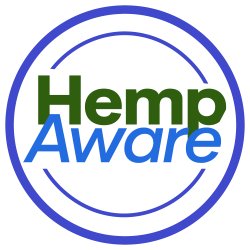Investigating Paid Platforms and Programmatic Oddities: The Ultimate 2024 CBD Advertising Showdown
The top cbd advertising platforms. I said that straight out of the beginning there. If you find yourself mired in the CBD industry, you know that after a double espresso, advertising makes the trip smoother—yet more difficult. The legal terrain reminds one of treading on Jell-O. Thanks to rules, platform fine print, and the always alert eyes of ad inspectors, every movement in digital ads can wobble. The typical digital highways—think Google, Facebook—don’t welcome CBD brands very kindly. Rather, other paths and programmatic ad networks have become possible lifelines. But what should you consider before dumping your brand into the programmatic blender and how do these sites stand? Thank you for asking. Let’s go deeply.

The Unconventional Collective: Paid Advertising and CBD
Marketing of CBD is not for the timid. Many online channels flatly reject CBD brands. You have most likely encountered terrible tales of companies closed by Meta—often following months of obedient campaigning. Google Ads is not friendly either. Should your product even whisper “CBD, you are ghosted without much of an apologies. But that’s driven a new kind of network to serve this growing vertical.
The Best CBD Advertising Platforms
If you are looking for “top CBD advertising platforms,” you want more than just broad recommendations. For CBD marketers, platforms like Mantis and Traffic Roots have become heroes. Beginning life in cannabis media, Mantis, for instance, developed a niche by emphasizing audience personalization and safe placement. Traffic Roots bills itself as a bridge, using contacts and technology to provide access to established publications. Both systems tilt toward contextual targeting, hence reducing the possibility of policy-triggered landmines.
Another network designed especially for CBD and wellness companies, RevOffers follows the affiliate model but still offers strong paid traffic choices. They are all working in environments that enable CBD marketing with phrases unlike a warning label.
One also deserves mention programmatic ad exchanges such as Adacado and Colossus. Their tech and compliance filters let CBD marketers avoid some of the trouble connected with traditional networks. Though with rigorous creative and compliance criteria, they allow businesses that might be skeptical or outright banned elsewhere.
Under the Hood: What is Happening? Essential Variations in Networks
Programmatic networks and conventional advertising platforms make sense only as apples and bowling balls. Programmatic buying impressions usually comes from real-time bidding. Based on data signals, some of which you control and some of which you cannot, algorithms match your advertisement with available supply. The variables change more quickly than fads in flavor-of- the- month diets.
On the other hand, sites like Mantis or Traffic Roots run with specifically designed publisher networks. Usually concentrating on cannabis, alternative health, or other compliant topics, they have carefully chosen where your adverts will find home. Often matched with increased click-through rates due to audience relevance, this enables a more controlled brand environment.
Programmatic networks allow placement to change minute by minute. Your advertisement might show up on a page you hadn’t expected one minute it finds itself on a credible wellness blog. The consequence is Programmatic can provide scale, but the signal-to– noise ratio may vary. You trade tech-powered diversification for audience specificity based on volume.

Cost vary greatly. While dedicated CBD ad platforms could demand a higher CPM, you are paying for cleaner publisher pool and piece of mind. Programmatic rates might decline, but if most of your expenditure goes into inferior inventory, efficiency may occasionally suffer.
The Exquisite Red Tape
Let’s discuss compliance since that is the elephant emblazoned across every CBD initiative. U.S. federal law states, providing THC is under 0.3%, hemp-derived CBD is legal. Sounds simple, but try showing a Facebook ad reviewer staring at your tincture bottle why this is simple.
Every network—including CBD-friendly ones—has a set of rules. Some merely allow topicals; some forbid ingestibles or smokables. Others wish for perfect third-party lab reports. There are networks where hemp seed oil is good but “CBD” in the copy will have your ad binned.
It gets much more difficult on programmatic marketplaces. You are governed by both the policies of the ad network and those of the particular publications. International reach? You are now negotiating an accordion of laws, rules, and cultural taboos that might fit your campaign on a paper plane. Before crossing national boundaries, always consult a legal adviser.
The Creative Conundrum
CBD companies cannot rely on shiny medical claims or miracle cure copy. Most CBD advertising campaigns split the red ink at even a hint of unproven health claims. Many programmed networks strictly control images, language, and even minute relief ideas.
Good creative treads a careful path between saying nothing at all and offering too much. Look to lifestyle images of people following wellness regimens. Emphasize support for general well-being, healing, or relaxation; avoid medical “cure” stories.
While compliance is non-negotiable, it could feel like promoting with oven mitts on. Some companies have had success with educational materials or advertorials creating traffic to an informational page first, then nudging toward a product. This offers real value for guests and can help to avoid some platform restrictions.
The Programmatic Deep-Dive: Slights and Traps
What Should One Know Before Leaping In
Know what you are agreeing to before you overspend on programmatic ads. Programmatic networks lack the protective bubble provided by dedicated CBD ad networks even if they promise reach and automation. If not controlled with hawk-like accuracy, your campaign can come across unintentional policy infractions, inventory mismatched, or traffic fraud.

Use whitelists, lists of publisher websites confirmed as safe for your ad material, always. Blacklists are your allies as well; they stop your budget from running off on dubious or pointless placements. Push back if your programming representative leaves these out of mention. Media buyers who lack openness run the danger of having your ad spend the digital Wild West.
Find out if your programmatic network associates with outside verification tools. One thing is invisibly running ads; another is having an independent verification partner like Integral Ad Science or DoubleVerify. Verify, but trust.
One of still unresolved issues is transparency. Ask appropriate questions. Out of what percentage of expenditure reaches publishers compared to what’s wasted to “tech fees“? Does anyone have minimum campaign budgets? Is your ad data rented through other middlemen or first-party, as claimed?




